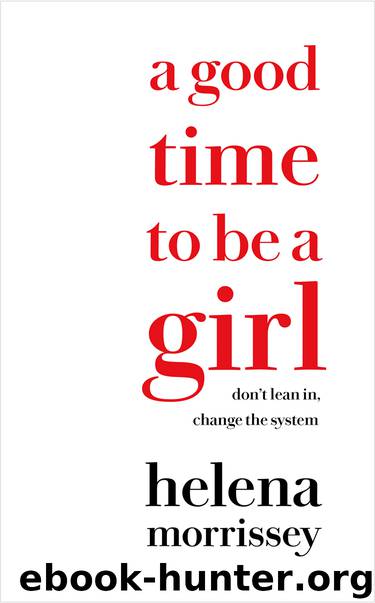A Good Time to be a Girl by Helena Morrissey

Author:Helena Morrissey
Language: eng
Format: epub
Publisher: HarperCollins Publishers
Published: 2017-12-10T05:00:00+00:00
Reading the compilation, which showed a wide range of educational attainment levels and many experimental early careers, we agreed that few of us would make it through our own, more standardised recruitment processes today. Many firms were stipulating a Maths or Economics degree, for example. The breakfast led to the Diversity Project, an intense, collaborative effort to improve industry diversity across all its dimensions.
I’m frequently asked if businesses should target gender first or whether it’s better to address multiple aspects of diversity all at once. I believe there was a time and a place for the 30% Club’s razor-like focus on gender; newer initiatives, like the Diversity Project, should be more holistic from the start. That doesn’t equate to a generalised, vague (and therefore doomed) attempt to achieve progress – we still need targeted actions – but broader diversity goals can actually be more effective for women’s advancement than ‘just gender’. A male colleague told me (not so very long ago), ‘I don’t know why you focus on women so much, they’ve never had it so good,’ which revealed a great deal about his personal feelings regarding all the recent attention paid to female talent.
I’m certainly conscious that this attention may have inadvertently made it harder for companies to work out how to address those other dimensions. At one point, the idea of a 20% target for ethnic minority board directors was mooted in the UK, which initially sounds promising, but what about LGBTQ+ representation? Disability? The 30% Club’s numeric target was helpful as a means of addressing one source of under-representation but extending the exact same approach quickly feels problematic. Diversifying talent is about wanting more ideas, to open up the pool of talent, not to manufacture a pop band. Ultimately, we want diversity of thought, and that takes a subtler approach than ‘three women, two ethnic minority, one gay, one disabled, one young, etc.’. How can we find solutions for the 100%?
Mellody Hobson is an accomplished African-American businesswoman and non-executive board director. She is a driving force behind efforts to improve the representation of black directors on boards of American companies, currently around 9% on Fortune 500 companies, compared with 13% of the population. Less than 1% of CEOs of the same Fortune 500 companies are black – there are just four today and since Ursula Burns stepped down as the CEO of Xerox Corporation, none of them are women. Burns is, to date, the only African-American woman to have ever led a Fortune 500 company.
Mellody invited me to speak at the 2016 Black National Corporate Directors conference in California and interviewed me alongside a (white, male) Fortune 500 CEO. The CEO had analysed his company’s customer base and found that two-thirds were not white men. Instead of addressing ‘just’ gender, or race, they were working towards approximating this two-thirds ‘other’ within the company’s board and management team. There was continued support for initiatives focusing on specific under-represented groups, but the overall goal was to reduce the dominance of the unrepresentative white male leadership.
Download
This site does not store any files on its server. We only index and link to content provided by other sites. Please contact the content providers to delete copyright contents if any and email us, we'll remove relevant links or contents immediately.
The Art of Coaching Workbook by Elena Aguilar(50127)
Trainspotting by Irvine Welsh(21048)
Twilight of the Idols With the Antichrist and Ecce Homo by Friedrich Nietzsche(18309)
Fangirl by Rainbow Rowell(8806)
Periodization Training for Sports by Tudor Bompa(7934)
Change Your Questions, Change Your Life by Marilee Adams(7388)
This Is How You Lose Her by Junot Diaz(6461)
Asking the Right Questions: A Guide to Critical Thinking by M. Neil Browne & Stuart M. Keeley(5364)
Grit by Angela Duckworth(5303)
Red Sparrow by Jason Matthews(5203)
Paper Towns by Green John(4811)
Room 212 by Kate Stewart(4743)
Ken Follett - World without end by Ken Follett(4452)
The Sports Rules Book by Human Kinetics(4084)
Housekeeping by Marilynne Robinson(4071)
Double Down (Diary of a Wimpy Kid Book 11) by Jeff Kinney(3937)
Papillon (English) by Henri Charrière(3923)
The Motorcycle Diaries by Ernesto Che Guevara(3795)
Exercise Technique Manual for Resistance Training by National Strength & Conditioning Association(3790)
